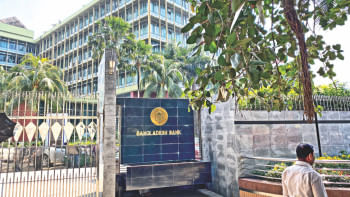RMG shipment to the USA fell 24.75% in Jan-Oct

Bangladesh's garment export to the United States fell 24.75 percent year-on-year to $6.35 billion in January-October this year because of a slowdown in the import of clothing items by American buyers since they still have stocks of old inventories.
Earnings from garment export to the US, the country's largest export destination, stood at $8.44 billion during the January -October period of last year, according to data from the Office of Textiles and Apparel (OTEXA) of the US.
If textile and apparel shipments are taken into consideration collectively, the earnings stand at $6.51 billion, a decrease of 25.25 percent year-on-year.
Last year, Bangladeshi suppliers shipped garment items worth $10.02 billion to America, the highest in a single year.
In January-October this year, the USA's overall apparel import fell by 22.71 percent year-on-year to $67.26 billion, OTEXA data showed. The decline stands at 21.46 percent, to $90.04 billion, if both textile and apparel products are considered jointly.
Garment shipments to the USA have been falling because of high inflation and because buyers still have old stockpiles of goods in stores of American clothing retailers and brands.
Moreover, American apparel retailers and brands imported a lot of garment items after recovering from the impacts of Covid-19 but sales did not pick up in line with supply as inflation rose due to the severe fallout of the Russia's invasion of Ukraine.
Exporters believed the declining trend reflected the US market correcting itself after clothing shipments to America witnessed more than 50 percent growth last year.
AK Azad, chairman and chief executive officer of Ha-Meem Group, a top garment exporter to the US, said sales of clothing items in US stores could not gather steam because of inflation.
At the same time, American retailers and brands imported a lot of garment items last year, he said.
The National Retail Federation (NRF) recently forecast holiday spending to reach record levels during November and December and to grow between 3 percent and 4 percent over 2022 to between $957.3 billion and $966.6 billion.
"It is not surprising to see holiday sales growth returning to pre-pandemic levels," NRF President and CEO Matthew Shay said. "Overall household finances remain in good shape and will continue to support the consumer's ability to spend."
Despite a slower growth rate compared to the past three years, when trillions of dollars of stimulus led to unprecedented rates of retail spending during the pandemic, this year's holiday spending is consistent with the average annual holiday increase of 3.6 percent from 2010 to 2019.
Online shopping has witnessed one of the biggest shifts in consumer behavior from the Covid-19 pandemic. Online and other non-store sales, which are included in the total, are expected to increase between 7 percent and 9 percent to a total of between $273.7 billion and $278.8 billion.
That figure is up from $255.8 billion last year.
"Consumers remain in the driver's seat and are resilient despite headwinds of inflation, higher gas prices, stringent credit conditions and elevated interest rates," NRF Chief Economist Jack Kleinhenz said.
"We expect spending to continue through the end of the year on a range of items and experiences, but at a slower pace. Solid job and wage growth will be contributing factors this holiday season, and consumers will be looking for deals and discounts to stretch their dollars," Kleinhenz said in the statement.

 For all latest news, follow The Daily Star's Google News channel.
For all latest news, follow The Daily Star's Google News channel. 








Comments